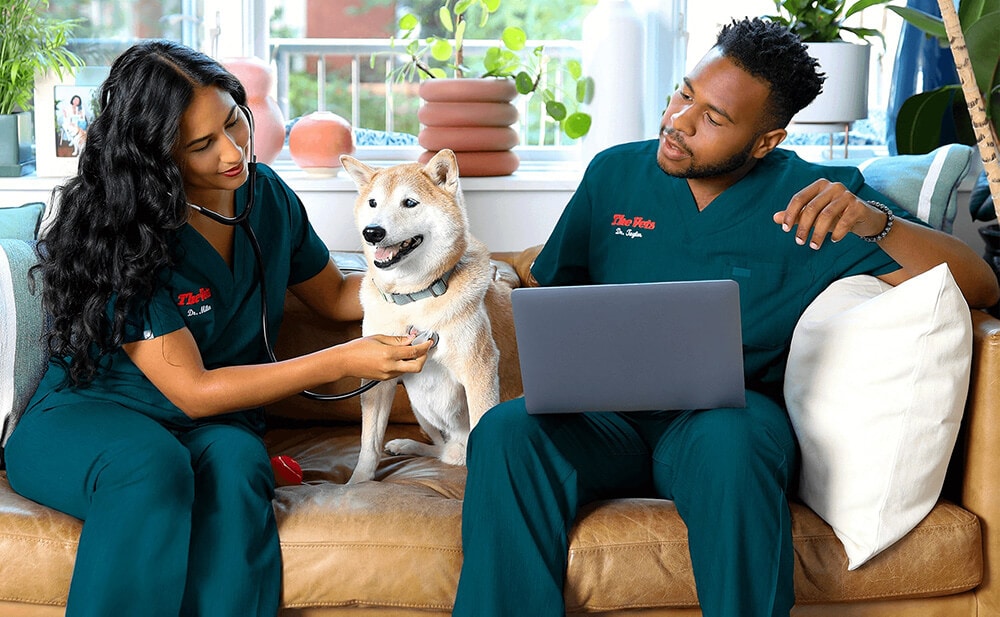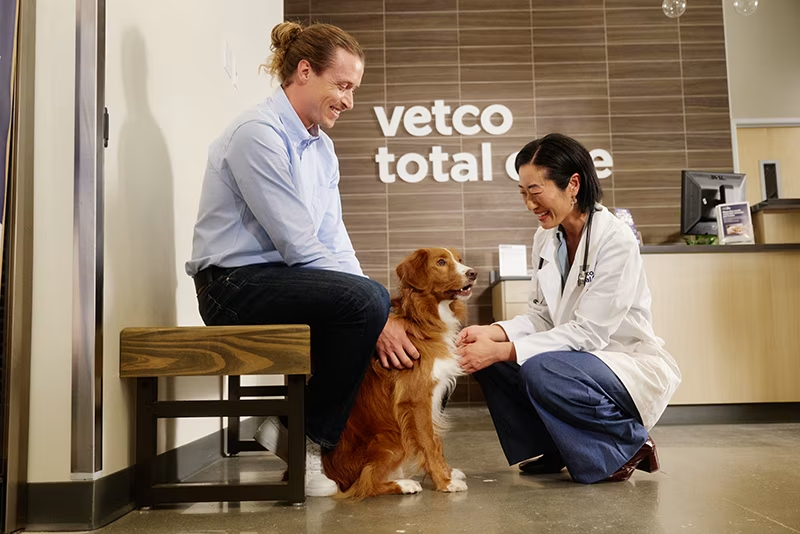A Veterinarian’s Insight Into Long-Term Outcomes of tplo surgery
A Veterinarian’s Insight Into Long-Term Outcomes of tplo surgery
Blog Article
Everything About Vet Surgical Treatment: Recognizing the Relevance of Expert Take Care Of Your Pet dogs
Vet surgical procedure is a vital part of family pet medical care. It incorporates various procedures, from routine optional surgical treatments to immediate treatments. Understanding the intricacies of these surgical treatments can aid pet dog owners make notified choices. The prep work, execution, and recuperation phases are essential for ensuring the well-being of pets. With correct understanding, proprietors can navigate the complexities of vet treatment. What elements should be taken into consideration before a pet dog undertakes surgical treatment?
Types of Vet Surgeries
When a pet dog calls for medical treatment, comprehending the different kinds of vet surgeries can help family pet owners make notified choices. Veterinary surgical treatments can be extensively categorized into three primary types: optional, urgent, and emergency situation surgical treatments. Elective surgical treatments, such as spaying or neutering, are planned treatments that are not instantly dangerous. Immediate surgical treatments, like those for international body elimination, should be done soon yet are not lethal in the moment. Emergency surgical treatments, such as those addressing extreme injury or internal bleeding, are important and call for prompt attention.Additionally, surgical treatments can vary in intricacy, varying from minimally intrusive laparoscopic treatments to extra substantial open surgical procedures. Each sort of surgery lugs its own dangers and recovery procedures. Recognizing these classifications permits pet dog owners to participate in purposeful conversations with veterinarians, resulting in far better end results for their beloved family pets.
Preparing for Your Animal's Surgical treatment
Getting ready for a pet dog's surgical procedure entails an extensive checklist to assure all fundamentals are covered. Reliable interaction with the veterinarian is crucial for recognizing the procedure and any required pre-operative actions - tplo surgery. In addition, having clear post-operative treatment instructions will assist proprietors offer the finest support for their recouping animals
Pre-Surgery Checklist Essentials
Guaranteeing a smooth surgical experience for a pet requires cautious prep work and interest to detail. A pre-surgery checklist is vital for pet owners to follow. Verifying the set up surgical procedure day and time is crucial. Proprietors need to also verify that their family pet has actually fasted according to the vet's directions, normally for 8-12 hours prior to surgical treatment. Collecting required medical records, including vaccination history, is essential for the vet's evaluation. It is likewise advisable to prepare a comfy room in the house for the pet dog's healing after surgical procedure. Lastly, proprietors ought to have a prepare for transportation to and from the vet facility, making certain that the pet is safe and comfy throughout the journey. Adhering to these actions can considerably boost the medical experience.
Interacting With Your Veterinarian

Effective interaction with the veterinarian is crucial for a successful medical experience for pets. Proprietors should be prepared to review their pet dog's case history, including any pre-existing conditions, medications, and allergies. This info aids the veterinarian analyze threats and customize the surgical strategy appropriately. Additionally, animal proprietors should ask questions regarding the treatment, anesthesia, and expected results to assure they completely comprehend the process. Clarifying any uncertainties can alleviate anxiousness for both the family pet and the owner. It is also important to interact any type of behavioral modifications or issues observed in the family pet leading up to the surgery. Eventually, clear dialogue fosters count on and collaboration, making sure that animals obtain the very best possible care throughout their medical journey.
Post-Operative Care Instructions
After talking about the operation with the vet, pet dog proprietors ought to concentrate on post-operative treatment directions to assist in a smooth recuperation for their pets. These guidelines generally include checking the surgical site for signs of infection, such as inflammation or discharge. Family pets may require to be kept one's cool and restricted to avoid too much activity that could interrupt healing. Pain monitoring is important, so owners ought to follow the veterinarian's advice on administering medicines. Additionally, dietary constraints might be recommended to prevent gastrointestinal trouble. Regular follow-up visits are vital to guarantee proper healing and deal with any type of issues. By adhering to these post-operative treatment guidelines, pet proprietors can substantially add to their family pet's recuperation and overall well-being.
The Surgical Refine Explained
The surgical process for pet dogs encompasses critical steps that guarantee their safety and security and recovery. Pre-surgery preparations are crucial for lessening threats, while post-operative care standards play an important duty in promoting healing. Understanding these parts aids family pet owners browse the surgical experience more successfully.
Pre-Surgery Preparations
Before a family pet undertakes surgical treatment, a number of crucial preparations need to take place to assure a secure and successful procedure. First, a detailed vet exam is vital to analyze the family pet's general health and identify any type of possible risks. This may include blood examinations, imaging, or other basics diagnostics. The vet will certainly likewise go over anesthesia alternatives customized to the pet dog's details needs. In addition, pet owners are typically advised to withhold food and water for a specified time prior to surgery to reduce the danger of complications during anesthesia. It's essential for owners to give a total medical background, consisting of any kind of drugs or allergies, making certain the medical group has all necessary information. Appropriate communication and adherence to pre-surgery standards can significantly boost the outcome of the treatment.
Post-Operative Care Guidelines
Correct post-operative treatment is necessary for guaranteeing a pet's recovery adhering to surgery. After the treatment, pets must be monitored carefully for any type of signs of complications, such as extreme bleeding, swelling, or uncommon actions. It is vital to follow the vet's directions pertaining to medications, consisting of painkiller and antibiotics. Pet dogs need to be kept in a website link quiet, comfortable environment to lower stress and promote healing. Limiting activity is crucial; short, leashed strolls might be essential, but jumping or running ought to be avoided. Regular follow-up appointments ought to be arranged to examine the healing procedure. Additionally, the medical website needs to be maintained tidy and completely dry, with any type of signs of infection reported to a vet without delay. Sticking to these guidelines boosts healing outcomes.
Anesthesia and Pain Administration
Effective anesthetic and discomfort monitoring are essential components of veterinary surgical treatment, ensuring that pets continue to be comfy and risk-free throughout the treatment. Vets examine each family pet's individual needs, taking into consideration aspects such as age, weight, health and wellness standing, and the kind of surgery being performed.Anesthesia methods typically consist of a mix of pre-anesthetic medications, induction agents, and inhalant anesthetics, allowing for precise control over the pet's degree of consciousness. Surveillance during surgical treatment is important; veterinarians continually observe crucial indications to attend to any prospective complications promptly.Pain management approaches may involve opioids, non-steroidal anti-inflammatory medicines (NSAIDs), and anesthetics, tailored to the family pet's certain scenario. This multifaceted method aids lessen pain and promotes a smoother surgical experience. By focusing on effective anesthetic and pain management, vet experts improve the general welfare of pet dogs undergoing operations, ensuring they obtain the highest possible criterion of treatment.
Post-Operative Treatment and Recuperation
Following surgery, the emphasis changes to post-operative care and recuperation, which is crucial for guaranteeing a pet's safe go back to normal activities. Throughout this duration, family pets need a silent, comfortable atmosphere to aid healing. Proprietors need to carefully monitor their pets for any kind of signs of pain or uncommon behavior.Veterinary guidelines typically include specific guidelines connected to medication administration, wound treatment, and dietary adjustments. It is vital to comply with these recommendations to reduce complications and advertise recovery. Animals may need to be restricted from vigorous activities, such as running or jumping, throughout their recuperation period (emergency vet).Regular follow-up appointments with the vet permit tracking of the family pet's progress and prompt adjustments to the care plan. Supplying psychological assistance and friendship can likewise enhance a pet's healing experience, assisting to ease tension and anxiety. Overall, attentive post-operative care plays a considerable role in accomplishing an effective recuperation
Identifying Problems After Surgery
Exactly how can pet proprietors identify difficulties after surgical treatment? Awareness of specific indications is necessary for guaranteeing the well-being of pet dogs during healing. Common indications include too much swelling, inflammation, or discharge at the surgical site, which may signify infection. In addition, relentless discomfort, indicated by whimpering or hesitation to relocate, should trigger immediate attention. Changes in hunger or water intake can also indicate issues; a reduction in these actions might signify discomfort or distress.Moreover, pet dog proprietors should check their animals for any kind of uncommon actions, such as lethargy or trouble breathing, as these can be indications of major problems. Throwing up or diarrhea following surgical procedure might need immediate vet assessment. Recognizing these issues early can substantially impact an animal's healing procedure, stressing the relevance of vigilance and punctual interaction with a vet for any concerning signs.
The Function of Veterinary Specialists in Surgical Treatment
Veterinary professionals play a crucial function in ensuring the security and success of operations for animals, particularly adhering to surgical procedure when keeping an eye on and treatment are critical. These professionals consist of vets, vet technicians, and support team, all of whom add specialized skills to the surgical process.Before surgical procedure, vets perform complete assessments to analyze the pet's wellness, making certain that any type of hidden conditions are managed. During the procedure, the medical group supplies anesthesia, preserves sterile atmospheres, and keeps an eye on vital indicators, very important for reducing risks.Post-operative care is just as substantial; veterinary specialists observe for difficulties, take care of pain, and guide proprietors on recuperation techniques. Their expertise allows them to acknowledge very early indicators of distress or infection, making sure prompt intervention. Inevitably, the joint efforts of vet specialists in medical treatment foster a safe environment, promoting the well-being of animals throughout the surgical journey.

Often Asked Concerns
Just how Do I Choose the Right Vet Specialist for My Pet dog?
Selecting the right veterinary cosmetic surgeon involves investigating credentials, reviewing reviews, and examining the clinic's setting. It is important to assess the cosmetic surgeon's experience with specific treatments and their communication design when deciding.
What Are Common Misconceptions Regarding Vet Surgeries?
Usual mistaken beliefs concerning veterinarian surgical treatments consist of beliefs that they are constantly high-risk, unneeded, or only for emergencies. Several pet dog owners take too lightly the advantages of precautionary treatments and the skill associated with veterinary medical treatment.
Just How Much Will My Animal's Surgical procedure Expense?
The price of an animal's surgical procedure can differ significantly based upon variables such as the sort of procedure, the veterinarian's experience, and geographical browse around here area (canine tplo surgery). Generally, expenditures vary from a couple of hundred to numerous thousand bucks

Can My Family Pet Consume Before Surgical Treatment?
Before surgical treatment, it is normally recommended that family pets avoid consuming for a details period. This fasting assists lower the threat of issues throughout anesthesia. Proprietors should consult their vet for exact directions customized to their animal's demands.
What if My Family Pet Has Pre-Existing Health And Wellness Issues?
When a family pet has pre-existing wellness problems, it's important for the veterinarian to examine these elements prior to surgical procedure. This examination guarantees ideal precautions are taken, decreasing dangers and enhancing the pet's total safety during the treatment.
Report this page